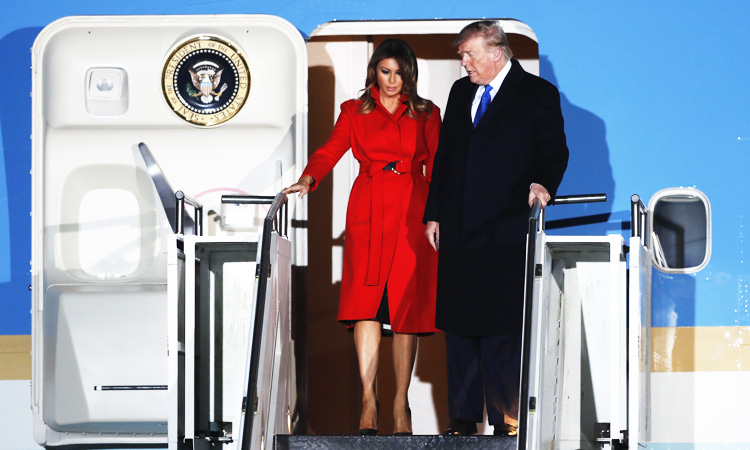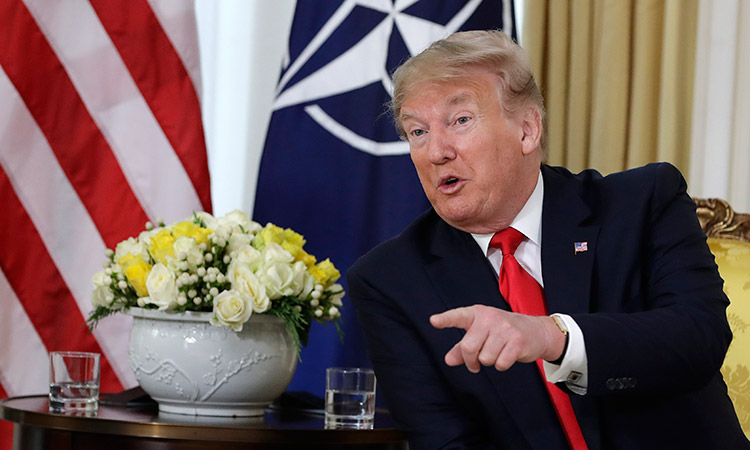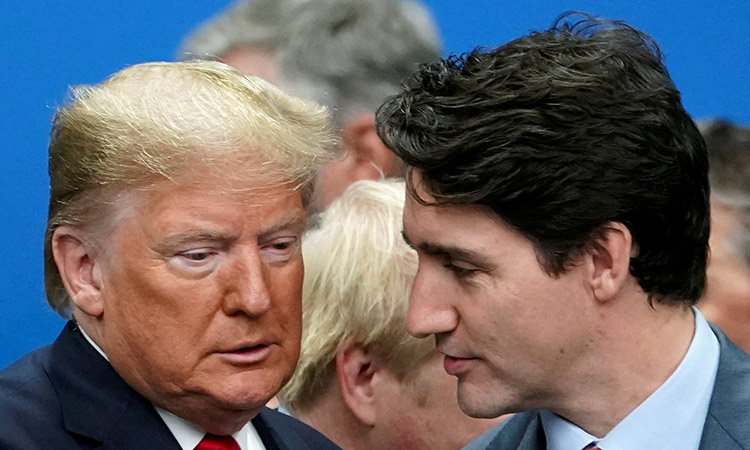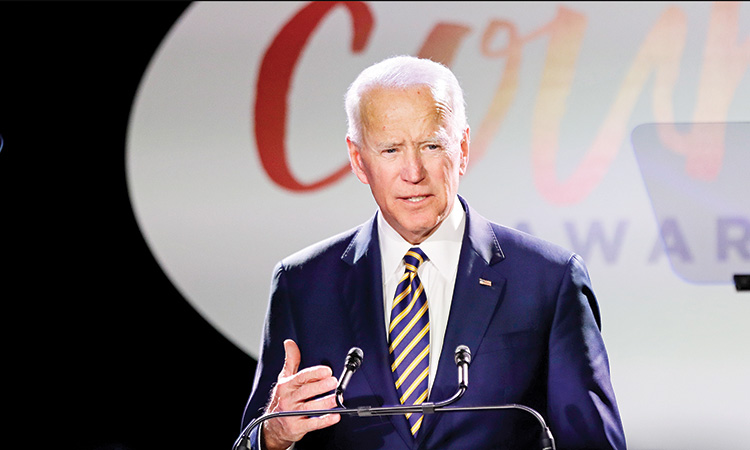Trump may keep the US in NATO, but the damage is done
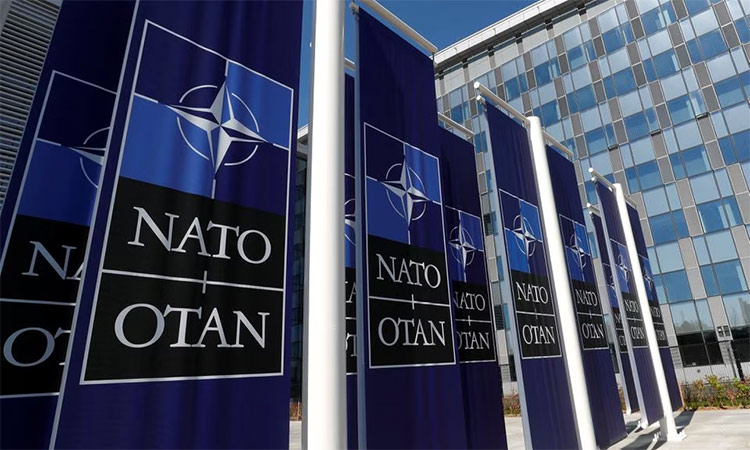
Banners displaying the NATO logo are placed at the entrance of new NATO headquarters in Brussels, Belgium. Reuters
Marc Champion, Tribune News Service
Donald Trump says he’s good at negotiating real estate deals and I don’t doubt him. He published a book about it, and one of its top tips was to maximize leverage by learning what an opponent needs most, and then threaten to take that away. It’s precisely how he approached NATO as US president, and judging by his remarks at the weekend, it’s how he’ll operate again if elected in November.
There are two problems here and by far the more worrying is that applying the art of the real estate deal to the art of military deterrence is inept and dangerous. The second is that, as the data show clearly, Europe did not start spending more, let alone “hundreds of billions” more, because of anything the former, and possibly future, US president has said — contrary to his claims on Saturday.
As he prodded Europeans to share more of the NATO burden in 2017, Trump correctly identified that what the alliance’s members valued most was its Article V collective defence clause. The powerful deterrent effect of that language is the reason so many countries have clamoured to join the North Atlantic Treaty Organization, and still do. After the Soviet Union’s collapse in 1991, they couldn’t be sure whether Russia would accept its loss of a centuries-old empire without a struggle, and history advised against optimism. So, they insured against the worst by joining an alliance that even Russia’s resurgent military couldn’t defeat. Article V is the cornerstone of that insurance policy.
By his own telling at a campaign rally on Saturday, Trump once warned other NATO leaders that unless they met the alliance’s defence spending requirements, he would in effect void their insurance. Not only would the US not come to their aid should they be attacked, but he’d let Russia do “whatever the hell they want.”
This didn’t mean the US would leave NATO, and might have been less worrying if the parameters of the complaint were set and it was clear the new US president remained committed to NATO’s basic mission, or even understood it. That wasn’t the case.
Trump has made little secret of his disdain for the alliance — and his admiration of Vladimir Putin, its principal nemesis. According to his National Security Adviser John Bolton, the then president did propose pulling the US out, in 2018. Congress passed legislation requiring a two-thirds Senate majority for that to happen, yet the fail-safe isn’t enough to stop Trump destroying the alliance from within if he wants to.
Threatening to abandon Article V undermines its deterrent value, without having to actually do anything. It’s as though in a real estate negotiation, every hardball threat didn’t just pressure the other side, but also caused a part of the building to collapse. Be convincing enough about US disinterest in defending Lithuania, for example (Trump once called the idea crazy), and the whole edifice of deterrence in Europe falls. The temptation of adversaries to test NATO’s collective defence commitment could only grow.
The good news for Europe is that when it comes to what NATO members spend on defence, what Trump had to say was never that important. Most governments had been increasing their defence budgets as a result of Russian aggression since before he took office the first time, and that’s likely to continue regardless of who occupies the White House. Make no mistake, Europe’s NATO members need to spend more on their own defence.
Every American president since the end of the Cold War has felt the same, and many Europeans have too. Europe took licence with the so-called peace dividend that followed the dissolution of the Warsaw Pact in 1991, assuming there could never again be the kind of land war on the continent that we are now seeing in Ukraine. That belief was historically naive. It became a feckless dereliction of duty as risks began to reemerge in plain sight, and is having severe implications now. Europe’s leaders realize this.
The tide began to turn, not after Trump came to office in 2017, but in 2015, the first year to benefit from defence budgets drawn up after Putin annexed Crimea and launched a hybrid war in Eastern Ukraine the year before.
In fact, after a sharp three-year run, the rate of increase in European NATO defence spending plateaued after Trump took office. With COVID, the rate of increase fell again, before soaring in 2023, the first year of budgets drawn up after Putin’s full invasion of Ukraine, on Feb. 24, 2022. President Joe Biden had little or nothing to do with the recent leap, or the post-COVID fall. Barack Obama didn’t cause the boost during his last years in office. No more was Trump responsible for the deceleration in real defence spending increases that happened to follow his inauguration. Who knows, since it is a counterfactual, — it’s possible that without him there might have been a sharper deceleration. We’ll never know, but the story as he tells it is not true. Europe’s governments don’t take money from education and health to spend on defence based on what American presidents say.
